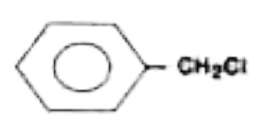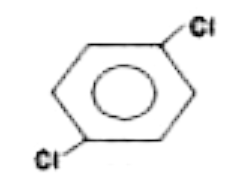Which of the following alkyl halides will undergo SN1 reaction most redily ?
(CH3)3C−F
(CH3)3C−Cl
(CH3)3C−Br
(CH3)3C−I
The correct Answer is:D
To determine which alkyl halide will undergo an SN1 reaction most readily, we need to consider the factors that influence the rate of this reaction. The SN1 mechanism involves the formation of a carbocation intermediate, and the rate of the reaction is primarily dependent on the stability of this carbocation and the ability of the leaving group to depart.
1. Identify the Alkyl Halides:
- List the alkyl halides provided in the question. For example, let's assume the options are:
- A: CH3Cl (methyl chloride)
- B: CH3Br (methyl bromide)
- C: CH3I (methyl iodide)
- D: (CH3)3CBr (tert-butyl bromide)
2. Determine Carbocation Stability:
- The stability of carbocations increases with the degree of substitution. Tertiary carbocations are more stable than secondary, which are more stable than primary.
- In our options, (CH3)3C+ (from D) is a tertiary carbocation, which is the most stable.
3. Evaluate the Leaving Groups:
- The leaving group ability is crucial for SN1 reactions. The order of leaving group ability from best to worst is:
- Iodide (I−) > Bromide (Br−) > Chloride (Cl−) > Fluoride (F−).
- In our options, CH3I has iodide as the leaving group, which is very good, while CH3Br has bromide, and CH3Cl has chloride, which is less favorable.
4. Combine Stability and Leaving Group Ability:
- For (CH3)3CBr, we have a tertiary carbocation and bromide as a leaving group.
- For CH3I, we have a primary carbocation (not favorable) but a very good leaving group.
- For CH3Br, we have a primary carbocation and a decent leaving group.
- The best combination of a stable carbocation and a good leaving group is found in option D: (CH3)3CBr.
5. Conclusion:
- Therefore, the alkyl halide that will undergo SN1 reaction most readily is option D: (CH3)3CBr.
- List the alkyl halides provided in the question. For example, let's assume the options are:
- A: CH3Cl (methyl chloride)
- B: CH3Br (methyl bromide)
- C: CH3I (methyl iodide)
- D: (CH3)3CBr (tert-butyl bromide)
- The stability of carbocations increases with the degree of substitution. Tertiary carbocations are more stable than secondary, which are more stable than primary.
- In our options, (CH3)3C+ (from D) is a tertiary carbocation, which is the most stable.
- The leaving group ability is crucial for SN1 reactions. The order of leaving group ability from best to worst is:
- Iodide (I−) > Bromide (Br−) > Chloride (Cl−) > Fluoride (F−).
- In our options, CH3I has iodide as the leaving group, which is very good, while CH3Br has bromide, and CH3Cl has chloride, which is less favorable.
- For (CH3)3CBr, we have a tertiary carbocation and bromide as a leaving group.
- For CH3I, we have a primary carbocation (not favorable) but a very good leaving group.
- For CH3Br, we have a primary carbocation and a decent leaving group.
- The best combination of a stable carbocation and a good leaving group is found in option D: (CH3)3CBr.
- Therefore, the alkyl halide that will undergo SN1 reaction most readily is option D: (CH3)3CBr.
Topper's Solved these Questions
- HALOALKANES AND HALOARENESBOOK - NCERT FINGERTPS ENGLISHCHAPTER - HALOALKANES AND HALOARENESEXERCISE - Assertion and reason
15 Videos
- HALOALKANES AND HALOARENESBOOK - NCERT FINGERTPS ENGLISHCHAPTER - HALOALKANES AND HALOARENESEXERCISE - Polyhalogen Compounds
6 Videos
- HALOALKANES AND HALOARENESBOOK - NCERT FINGERTPS ENGLISHCHAPTER - HALOALKANES AND HALOARENESEXERCISE - Higher order thinking skills
8 Videos
- GENERAL PRINCIPLES AND PROCESSES OF ISOLATION OF ELEMENTSBOOK - NCERT FINGERTPS ENGLISHCHAPTER - GENERAL PRINCIPLES AND PROCESSES OF ISOLATION OF ELEMENTSEXERCISE - Assertion And Reason
15 Videos
- POLYMERS BOOK - NCERT FINGERTPS ENGLISHCHAPTER - POLYMERS EXERCISE - NCERT Exemplar
9 Videos
Similar Questions
Knowledge Check
Which of the following alkyl halide undergo rearrangement in SN1 reaction ?
ACH3−CH3∣C∣CH3−C∣IH−CH3B C
C DAll of these
DAll of theseWhich of the following is an aryl alkyl halide.
A B
B C
C DNone of these
DNone of theseWhich of the following halides undergo E2 elimination?
A B
B C
C D
D
Which of the following alkyl halides is hydrolysed by SN1 mechanism?
View SolutionWhich of the following will not undergo S1N reaction with OH−
View SolutionWhich of the following alkyl halides is iso -butyl bromide ?
View SolutionWhich of the following alkyl halides is hydrolysed by SN1 mechanism?
View SolutionThe order of reactivities of the following alkyl halides for a SN2 reaction is :
View Solution
